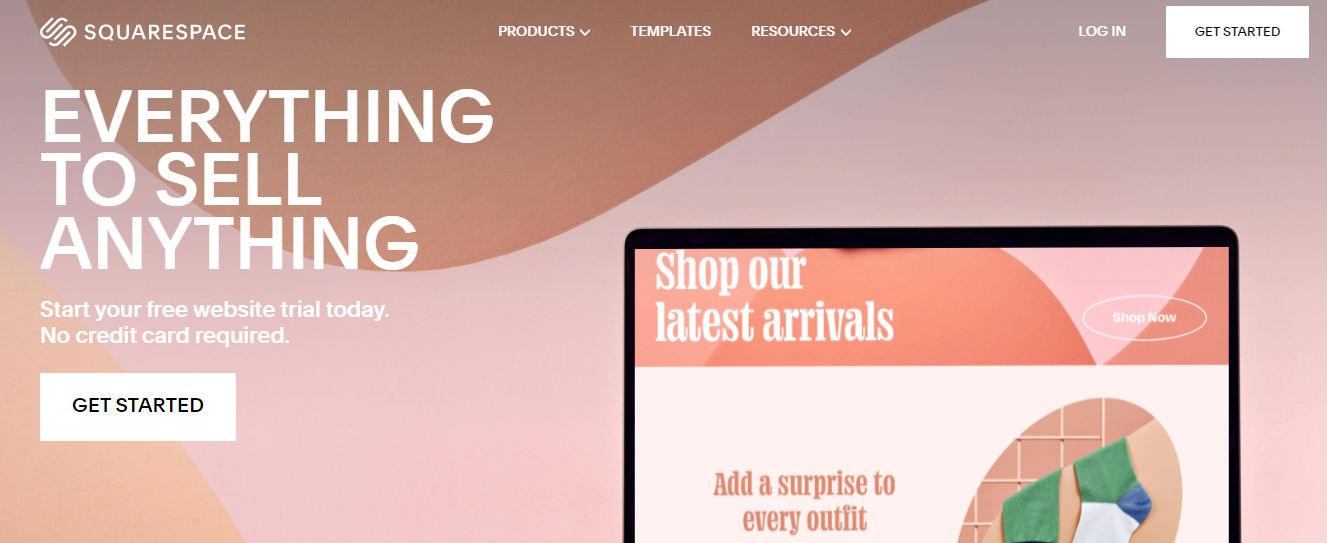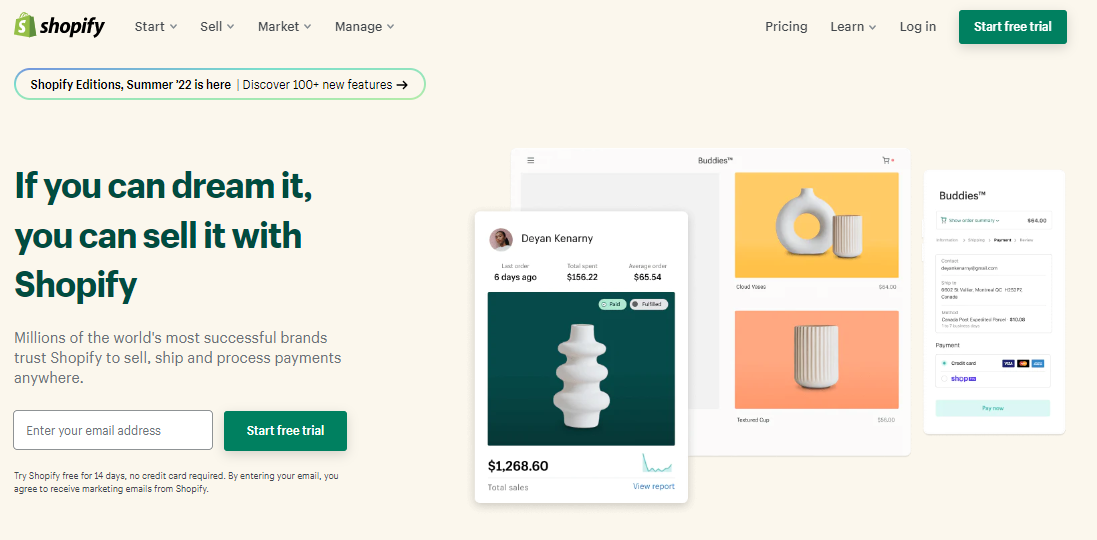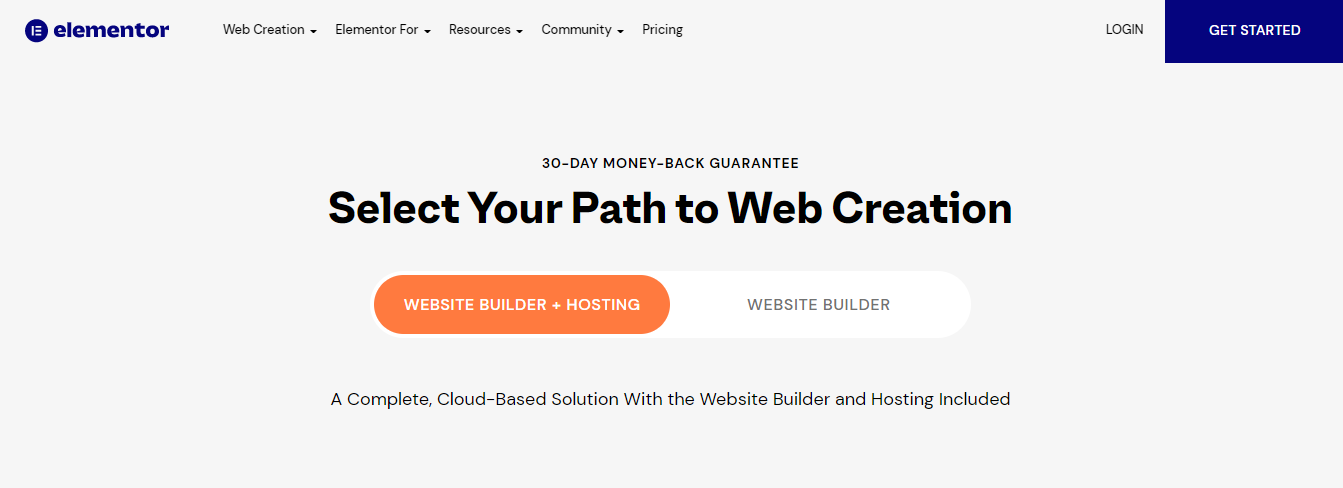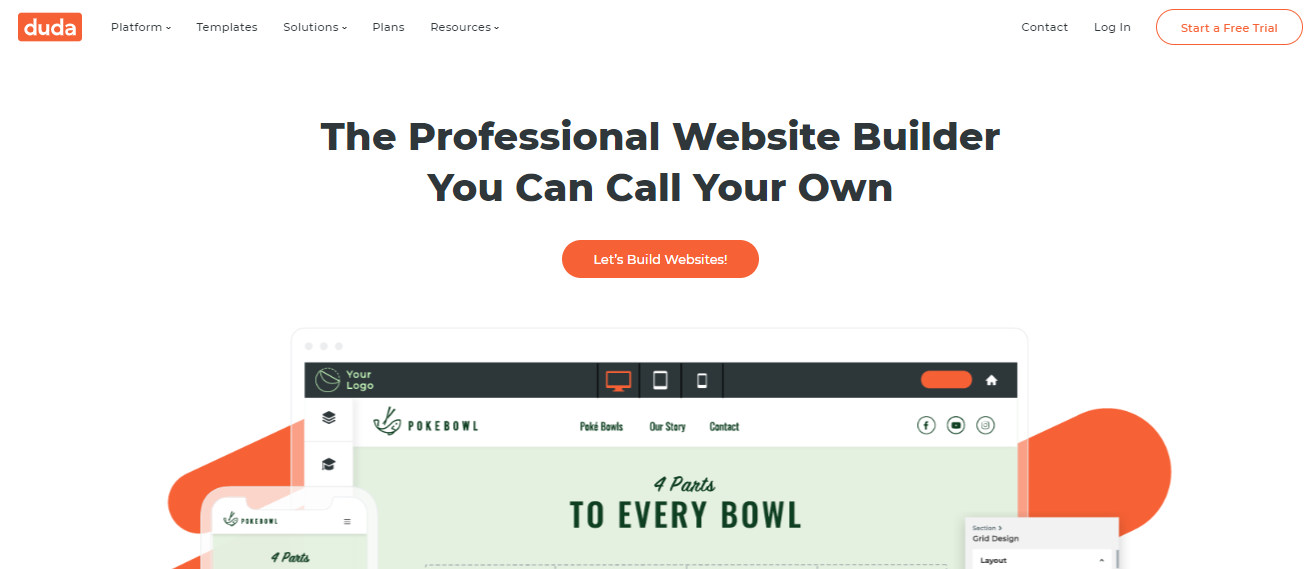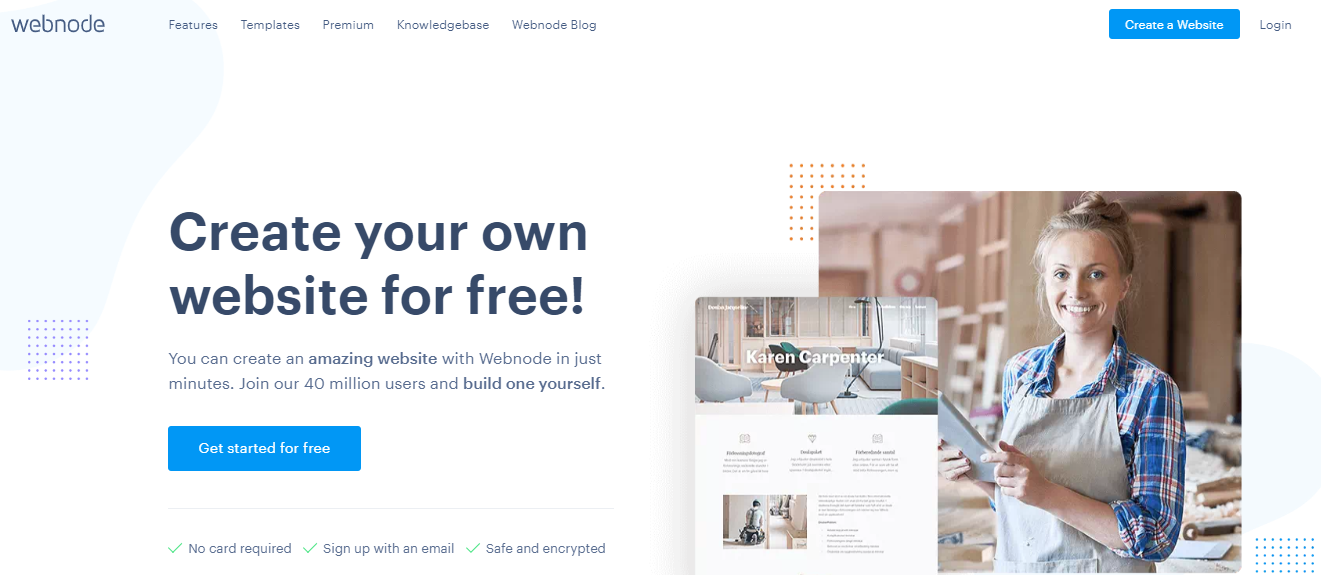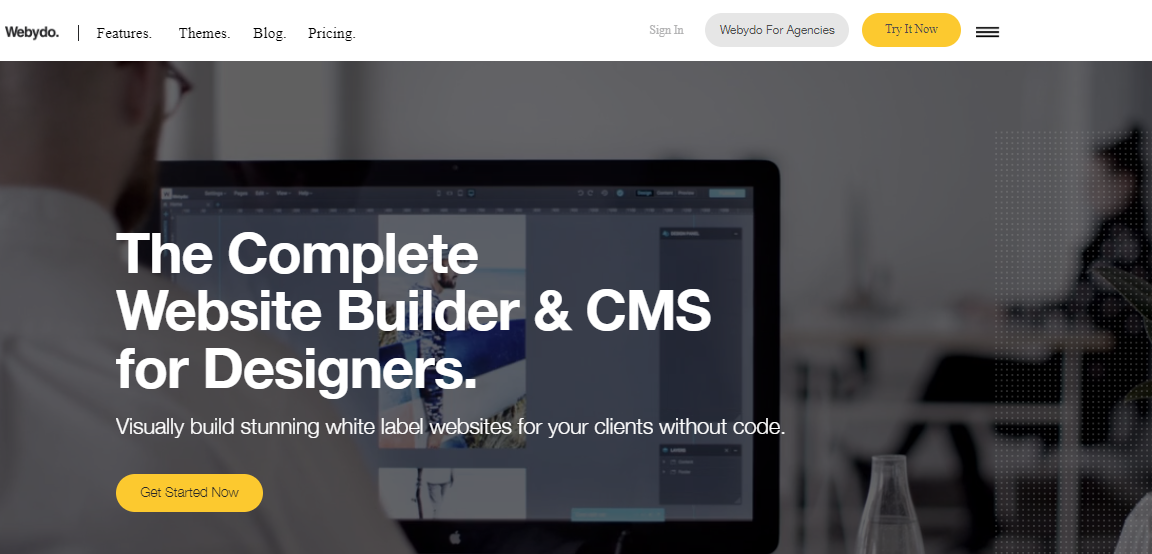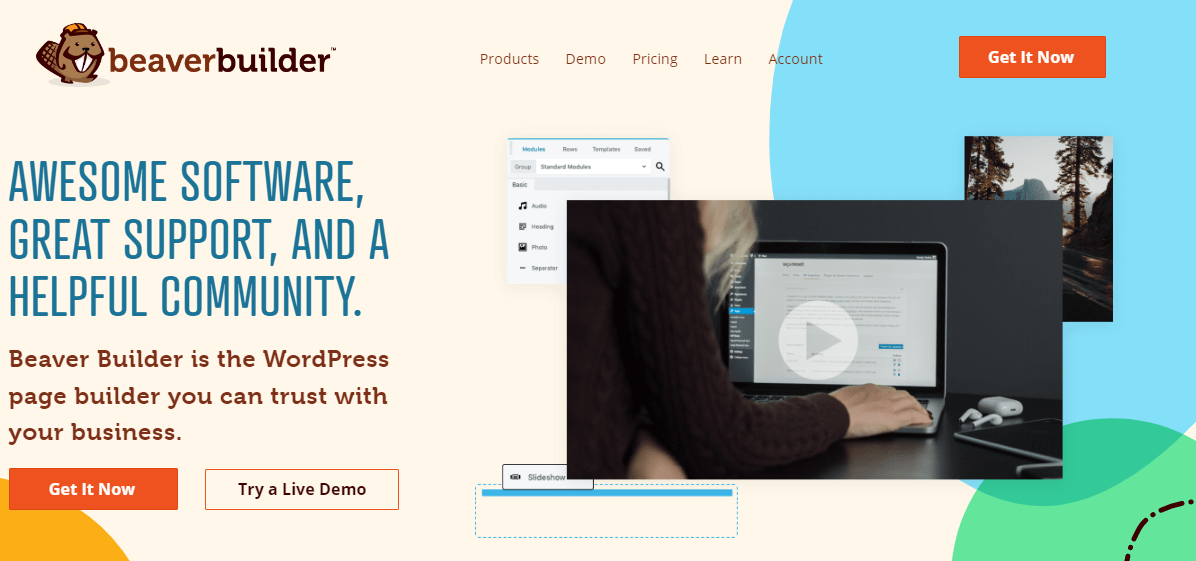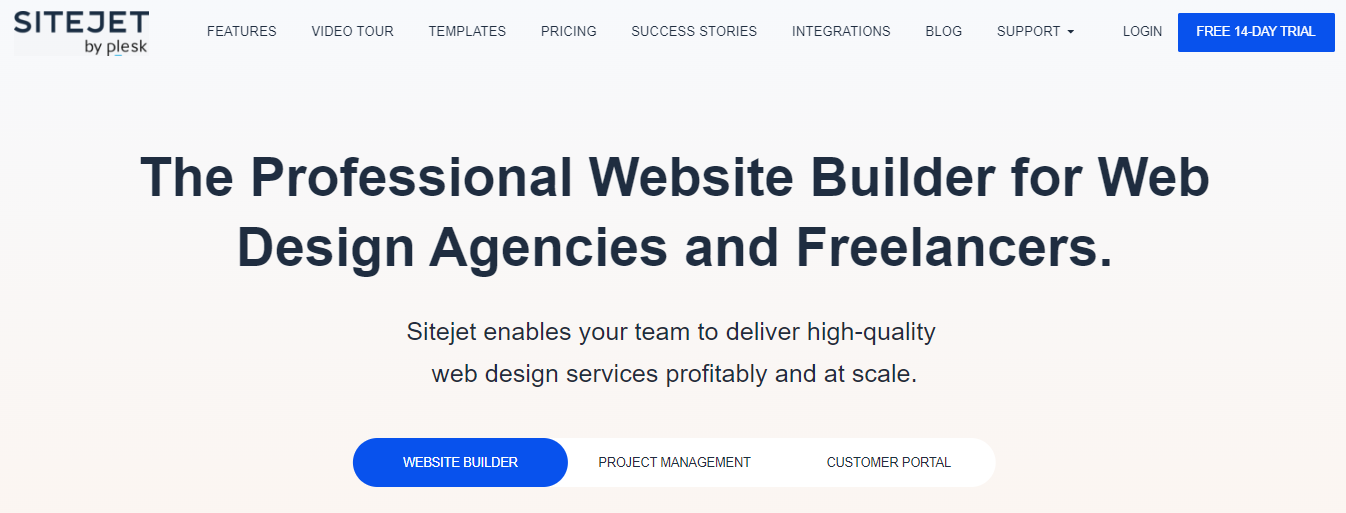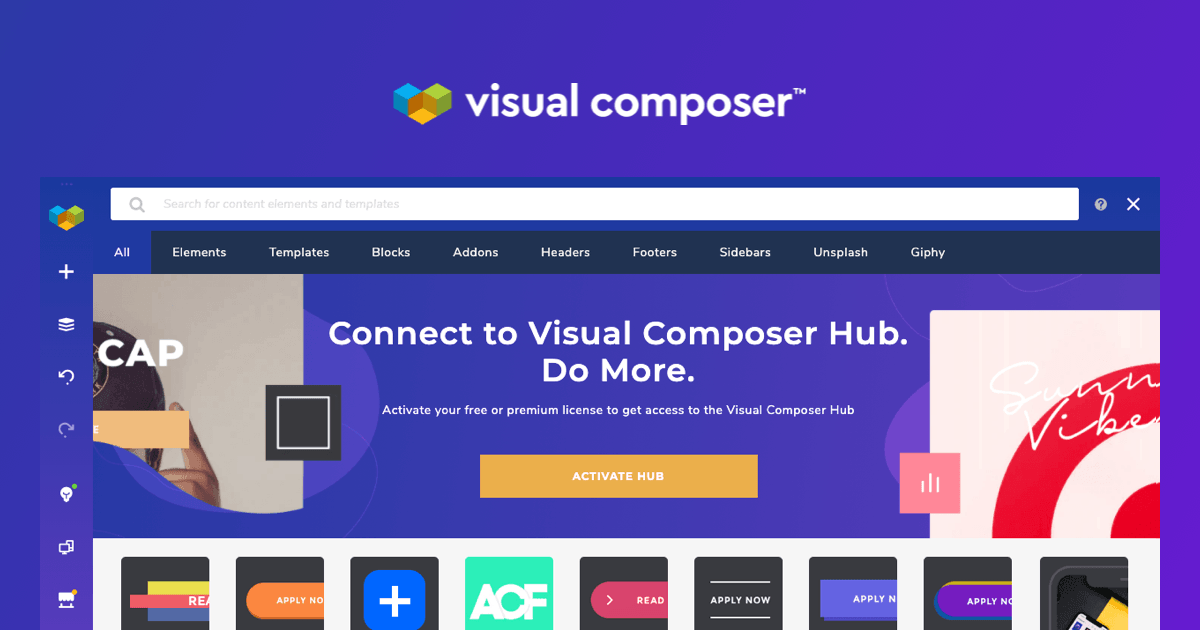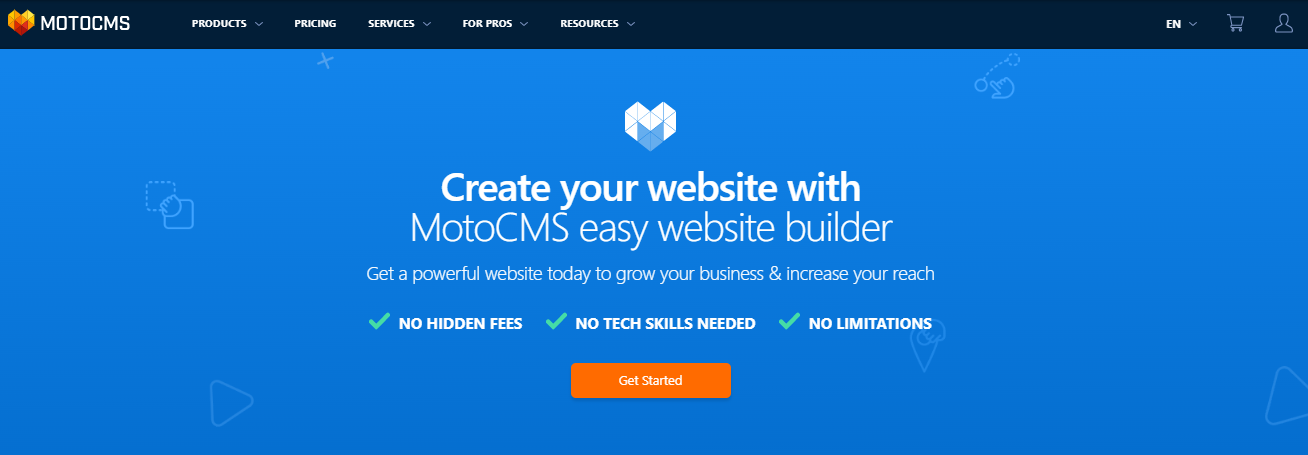- Best Wix Alternatives
- 1. Weebly
- 2. Webflow
- 3. Best for Design: Squarespace
- 4. Best for eCommerce: Shopify
- 5. Elementor (WordPress)
- 6. Duda
- 7. Webnode
- 8. Webydo
- 9. Beaver Builder (WordPress)
- 10. Sitejet
- 11. Visual Composer (WordPress)
- 12. MotoCMS
- 13. Mozello
- Final Code: SO, Which is the Best Wix Alternative?
Wix is certainly one of the more popular website builders, but is it really the best (or only) option?
Wix controversially is a closed ecosystem, unlike WordPress. This means users are basically stuck in a walled garden.
Despite all of the new features and improvements the Wix team has made (and there are many), it’s still difficult to get away from the disadvantages of having your business live in their ecosystem completely.
So what are the best Wix alternatives?
Some of the following site builders are “stand alone” options (similar to Wix), but we’ve also included a couple popular WordPress site builders (rather than just recommending WordPress – the most popular CMS).
Best Wix Alternatives
1. Weebly
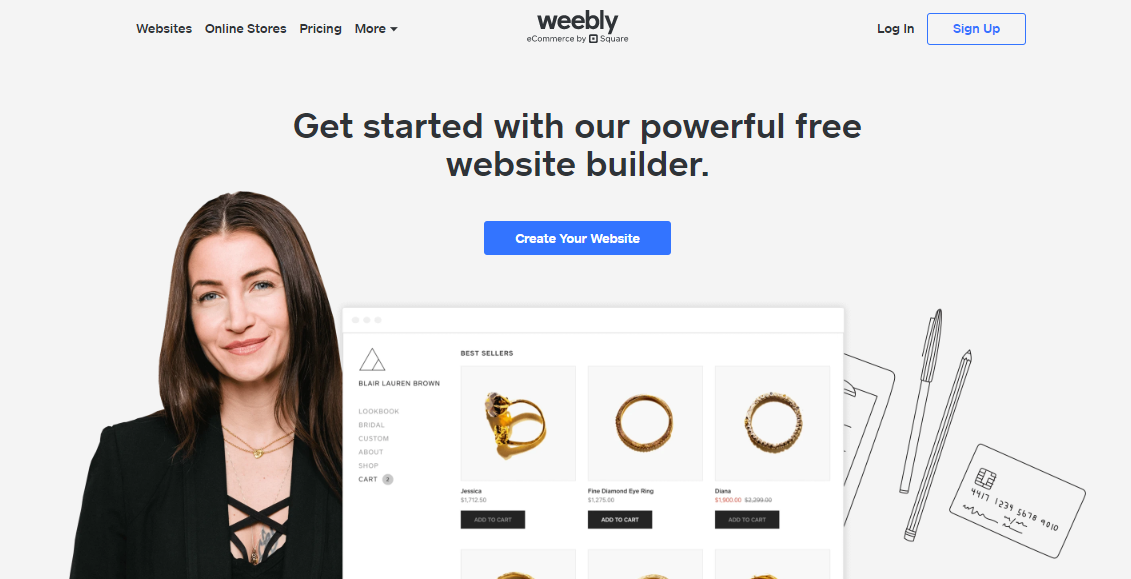
Summary: Weebly is perhaps THE most similar CMS and website builder relative to Wix. Recently acquired by payments giant Square, Weebly now boasts a closer e-Commerce integration compared to Wix.
Weebly Advantages
- Intuitive, easy-to-use drag-and-drop website builder (very similar to Wix)
- Also offers a free website plan if you are willing to let Weebly run advertising
- Offers 40 pre-built templates and themes
- Slightly stronger eCommerce builder compared to Wix
- Owned by Square (payments), with seamless integration
Weebly Disadvantages
- While similar to Wix, Weebly has considerably less marketshare
- Note as many theme tamplates compared to Wix
Weebly Prices: Free Basic plan (with advertising), then $5/month for Connect Plan (if you already own a domain), $12/month for Pro Plan (free domain, no Weebly ads, Square payments and cart), and $25/month for Business Plan (inventory management, tax calculator, etc…).
Further Reading:
2. Webflow
Summary: Webflow is one of the newest’s CMS upstarts, promising a revolutionary way to design high-end websites even with just a base level of technical jobs. Offering much more capability and functionality compared to Wix, Webflow has a slightly steeper learning curve.
Webflow Advantages
- Offers the most functionality relative to skills required
- One of the fastest growing new CMS platforms online
- Small investment in learning the system yields BIG capability improvements
- Lightning fast, modern tech stack
- Planty of tutorials (will make you a better website designer)
- No bloated (or unsecure) plugins or themes to deal with
Webflow Disadvantages
- Not nearly as simple as Wix to use (some design chops requried / willingness to learn)
- Pricing structure (two tracks) is a bit more complicated than Wix
- No plugin ecosystem like WordPress
Webflow Prices: Webflow has a two-track pricing system, one for Website Plans (think content CMS) and one for Ecommerce Plans (with checkout cart functionality). Website plans start at $12/month and Ecommerce plans start at $29/month.
Further Reading:
- Full Webflow Review
- Webflow vs Wix
- Webflow vs WordPress
- Webflow vs Squarespace
- Webflow vs Webydo
- Webflow vs Unbounce
- Webflow vs Pinegrow
- Top Webflow Alternatives
3. Best for Design: Squarespace
Summary: Squarespace is an elegant site builder, known as a favorite for creatives (who are definitely picky when it comes to presentation)! It’s also one of the longest standing site builders, meaning they’ve worked out a lot of the kinks and have EXCELLENT support staff and knowledge base documentation. Not a fly by night operation.
Squarespace Advantages
- More & varied design options and customizable templates for more elegant websites
- Flexible templates for content blogging, writers, artists, or eCommerce stores
- Similarly easy to use compared to Wix
- Excellent customer support and wiki documentation
- Friendlier than Wix for 3rd party tool & data integrations
- Transparent pricing (Squarespace gives you true monthly pricing options)
- All Squarespace plans come with unlimited bandwidth (Wix caps cheapest plan at 2GB)
Squarespace Disadvantages
- Fewer overall features compared to Wix
Squarespace Prices: Squarespace offers a 4-tier pricing plan (monthly or annual), starting with a $16/month Personal Plan (just the basics), then $26/month for the Business Plan (unlimited contributors, email, more integrations), then $35/month for Basic Commerce (if you are selling products), and $54/month for Advanced Commerce (advanced features like abandoned cart).
Further Reading on Squarespace:
- Squarespace vs Wix
- Top Squarespace Alternatives
- Squarespace vs Webflow
- Squarespace vs Bluehost
- Squarespace vs Etsy
- Squarespace vs Webflow
4. Best for eCommerce: Shopify
Summary: If you are selling physical products, Shopify is the first choice to evaluate. As the market leader, Shopify has made starting an eCommerce store as easy as WordPress made it to start a blog.
Shopify Advantages
- Integrates with virtually every major third-party sales and marketing tool
- The easiest way to create a functional e-commerce store in the shortest amount of time
- Large ecosystem of Shopify developers and specialists
- Massive Shopify app store for free and paid add-ons
- Mobile optimized stores, working out of the box
- Market leader in e-commerce
- Excellent customer support
Shopify Disadvantages
- Charges between 1-3% transaction fee + flat fees, in addition to monthly fee
- Fees make it harder to sell low-priced / high-volume items
- Native SEO is somewhat lacking
- Will they follow the Amazon model of knocking off brands for themselves?
- Basic Shopify: $29 per month, 30 cent transaction flat fee, and 2.9% transaction fee
- Shopify (Standard): $79 per month, 30 cent transaction flat fee, and 2.6% transaction fee
- Advanced Shopify: $299 per month, 30 cent transaction flat fee, and 2.4% transaction fee
Further Reading:
- Shopify vs Wix
- Top Shopify Competitors Worth Trying
- Shopify vs Squarespace
- Shopify vs WordPress
- Shopify vs OpenCart
- Shopify vs WooCommerce
- Shopify vs Shift4Shop
- Shopify vs Volusion
5. Elementor (WordPress)
Summary: Elementor is not a CMS per se, it’s actually a streamlined WordPress theme framework. In short, it makes creating high-end looking multi-functional websites incredibly easy with WordPress.
Elementor Advantages
- Easy to use, drag and drop theme and page builder
- Works with WordPress, so compatible with the entire WordPress ecosystem of plugins and functionality
- Ability to save custom built templates for future use
- Growing ecosystem of Elementor Developers and Front-End Designers
Elementor Disadvantages
- Some learning curve to get used to
- Relatively new to the market
Elementor Prices: Pricing starts at $49 per year (1 site), then $99 per year (3 sites) and caps out at $199 per year (1000 sites).
6. Duda
Summary: Duda is another rapidly growing drag and drop website builder. Similar to Wix, it’s relatively limited in terms of advanced functionality, but perhaps easier to build with as an all-in-one website builder.
Duda Advantages
- Hosting, domain name, and site security all included
- Ability to white label stats and analytics dashboard
- Deeper collaboration tools for client managementa and team delegation
- Ability to export site code and content, Wix does not allow this
- Better real-time customer support and agency support
- Edit any site element, including HTML, CSS, and JavaScript
- Scores higher on Google Lighthouse speed tests (compared to most Wix instances)
- mobile responsive templates (versus just “mobile friendly” on Wix)
- Extended 30-day free trial available (fully featured)
- Better for eCommerce with the ability to have up to 100 products for less than Wix charges
Duda Disadvantages
- More limited third-party “app” ecosystem, comapared to Wix
- Fewer templates (around 100 vs 600+ on Wix)
- No completely free plan
Duda Pricing: Duda features a 3 tier pricing structure, starting at 14 per month for 1 site license, $22 per month for exanded “Team” access, and $74 per month for Agency access (8 sites included).
7. Webnode
Summary: Webnode is a lesser-known site builder, but it offers some interesting features including outstanding multilingual support for both stores and marketing blogs.
Webnode Advantages
- Great for starter storefronts and marketing presence
- Excellent multilingual capability (easy to toggle between languages in backend)
- Includes email accounts
- Cheaper entry level plans compared to Wix
Webnode Disadvantages
- Struggles with very large information architecture (not as scalable)
- Fewer out of the box features compared to Wix
- Smaller user base, so may be a bit more of a gamble
- Fewer guides and resources for beginners to learn
Webnode Prices: Webnode HEAVILY pushes getting folks in the door on the FREE PLAN here. Then, you can choose your own adventure depending on if you are eCommerce oriented here, OR sticking to a standard website (with premium features) here. Either way, the Standard Plan on both is $12.50 per month, with the high end plans capping out at around $30 and some lower tier offerings for “just the website, no ecom” plans.
8. Webydo
Summary: Webydo is a more recent player in the CMS space, with a third-party app/plugin ecosystem (unlike the walled garden with Wix) and
Webydo Advantages
- More design capability and customization compared to Wix
- Third-party plugin ecosystem (although not up to the level of WordPress, for example)
- Great for agencies and design shops (with built-in support & enablement)
- Built as a CMS for content marketing
- Hosting included
- Faster responsive design (faster and more advanced UX for mobile)
Webydo Disadvantages
- Takes a bit more getting used to (steeper learning curve)
- Much more expensive base plans compared to Wix (see below)
Webydo Prices: $90/month Pro Plan, $180 Team Plan, and $400 Agency Plan. Enterprise pricing available on request.
9. Beaver Builder (WordPress)
Summary: Another framework built on top of WordPress, Beaver Builder makes it easy to create enterprise level designs and functionality without having to know any code. Unlike vanilla WordPress, there’s drag and drop tools that give it a feel of a Wix-like solution, while still getting all the benefits of a WordPress open source network.
Beaver Builder Advantages
- You get the benefit of WordPress (open source, plugins, affordable), without the price or wall-garden of Wix
- Easily build elegant design features (normally costing dozens of dev hours), with point and click & drag and drop simplicity
- Annual payment structure, no monthly fees
- Unlimited site licenses with no restrictions (all plans)
- You can opt to just used the page builder functionality with your current theme (or other third party theme)
- Solid white labeling plan, ideal for selling services to local businesses (for example)
Beaver Builder Disadvantages
- Can impact page speed, especially if using many other plugins
- Not a true eCommerce solution like Wix
Beaver Builder Prices: Annual pricing starts at $99 (just the page builder), then $199 Pro Plan (includes the Beaver themes), then $399 Agency Plan (white labeling), and finally $546 for the Ultimate Plan (renews every year for 40% discount).
Further Reading on Beaver Builder:
10. Sitejet
Summary: Sitejet is a solution gear more directly towards agencies and freelance designers, looking for a streamlined framework for winning site designs for various clients.
Sitejet Advantages
- Built-in project management workflow to easily streamline client management, specifically for web design projects
- Great to kick-start a freelance business or small agency with minimal setup
- More live training programs and onboarding support than Wix
Sitejet Disadvantages
- Owned by web hosting services company Plesk, so you might get some upsells and the builder itself might not be their top priority long-term
- Not really designed for end users, although it certainly could be useful
- Much less user adoption than Wix, smaller ecosystem
Sitejet Prices: Solo Plans start at $19/month, then the Team Plans escalate to $34/month (up to 3 users, site export functionality, white label branding), and finally the Agency Plan at $59/month (up to 10 users + API functionality).
11. Visual Composer (WordPress)
Summary: Visual Composer is another site builder built on top of the WordPress framework, featuring fully responsive drag and drop site building. If you still want the optionality of WordPress, Visual Composer is an excellent bridge tool.
Visual Composer Advantages
- Better pure landing page software functionality compared to Wix
- A truly free unlimited pricing tier to get started (more design elements, templates, tools and theme builder)
- A fairly open ecosystem, plays well with other WordPress tools (unlike Wix’s closed garden)
- Yearly pricing means Visual Composer is cheaper over the long run (but not if you have to switch)
- Offers WooCommerce support
Visual Composer Disadvantages
- Still requires WordPress, less of a seamless process compared to Wix
- Paid pricing tiers are more expensive up front than comparable Wix tiers
Visual Composer Prices: Visual Composer gets you with the Free plan, but then escalates to $49/year (single website plan), then $99/year (3 site plan), and $349/year for 1000 sites.
12. MotoCMS
Summary: MotoCMS promises more themes than Wix, outstanding support, and a fully exportable API if you change your mind.
MotoCMS Advantages
- More unique themes out of the box (2500+ vs 500+ for Wix)
- Outstanding support (goes well outside the lines of typical customer support)
- Fully exportable data API (so you can easily switch to another CMS), unlike Wix
- More payment integrations and options compared to Wix
- Easy to white-label for agency or client work
MotoCMS Disadvantages
- Shorter track record compared to Wix
- Less polish compared to Wix, likely due to fewer Dev resources
MotoCMS Prices: 2 simple pricing structures, either $9.90/month (billed annually) or $329 one-time lifetime license.
13. Mozello
Summary: Mozello is another upstart trying to compete with the likes of Wix, more specifically on eCommerce.
Mozello Advantages
- Developer friendly CMS, unlike the closed-end system with Wix
- Newbie friendly, no design chops or tech skills required
- Completely free plan options (ad-supported)
- eCommerce centric store builder
- Great for testing out a store concept for free
Mozello Disadvantages
- Not as much market share or track record as Wix
- Fewer live support resources & training aids
- Website editor isn’t very flexible
Mozello Prices: Free Plan (with ads), then $7/month (for no ads, but limit of 30 store items), and finally $14/month for unlimited store items.
Final Code: SO, Which is the Best Wix Alternative?
So which Wix competitor should you choose? When & why?
Here’s a summary based on your business use case:
- Looking for something very similar to Wix? Go with Weebly here.
- Trying to build out an eCommerce store? Go with Shopify here.
- Looking for better design options & customization? Go with Squarespace here.
- Just want to do-it-yourself on a budget? Go with WordPress + Elementor here.
- Want something built for SEO optimization out of the box? Go with Duda here.


